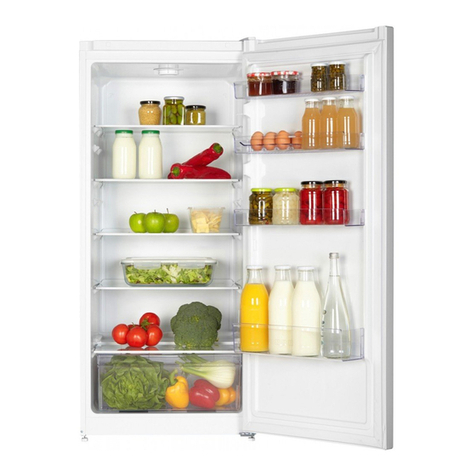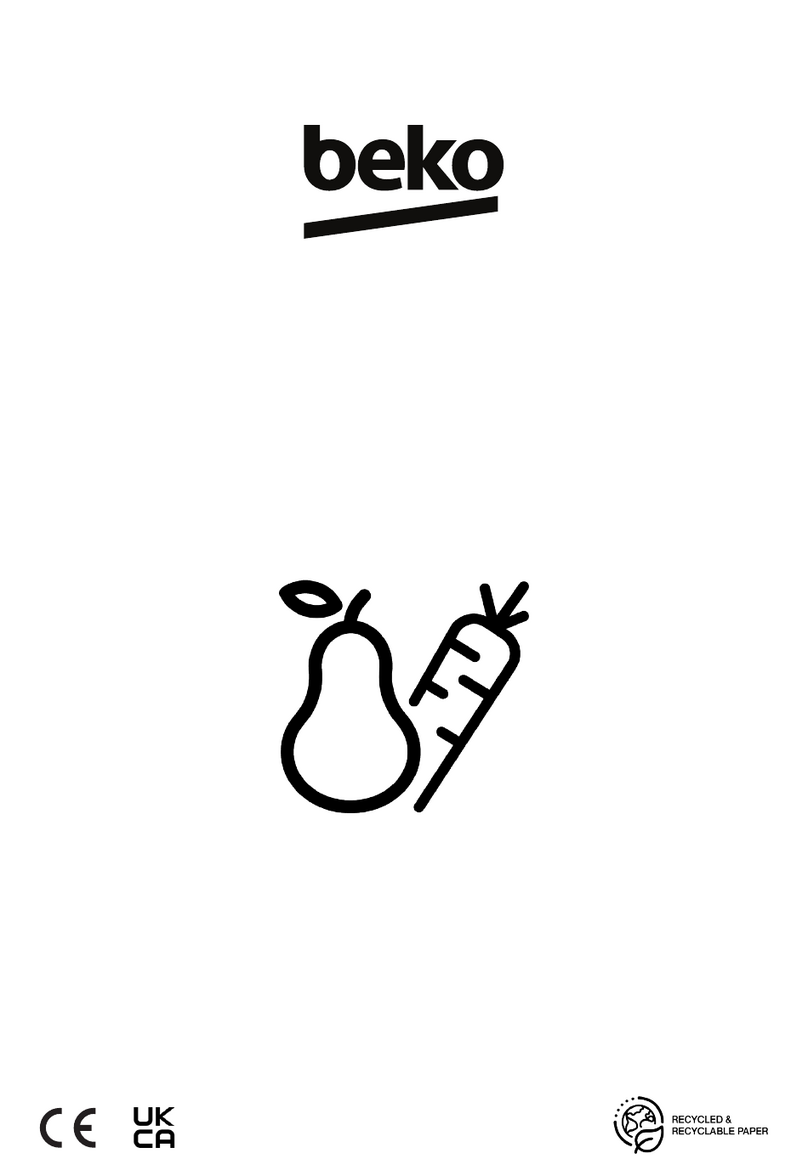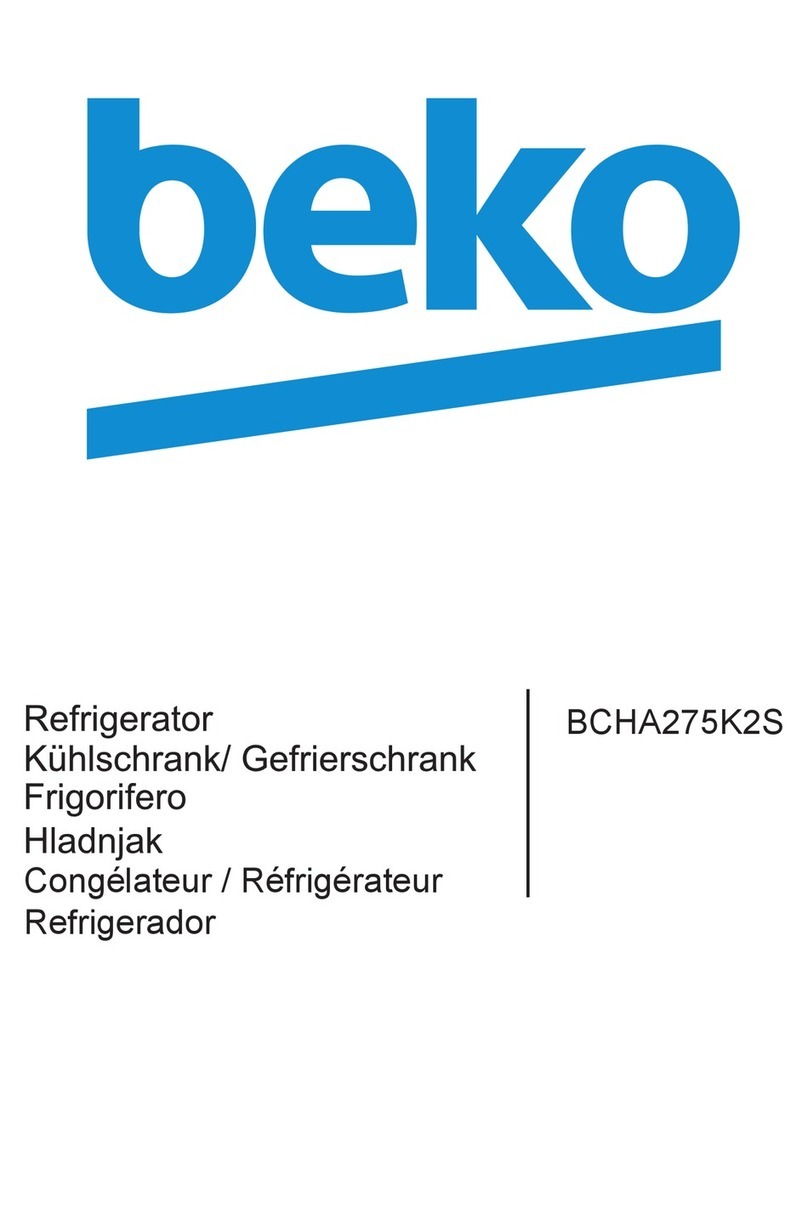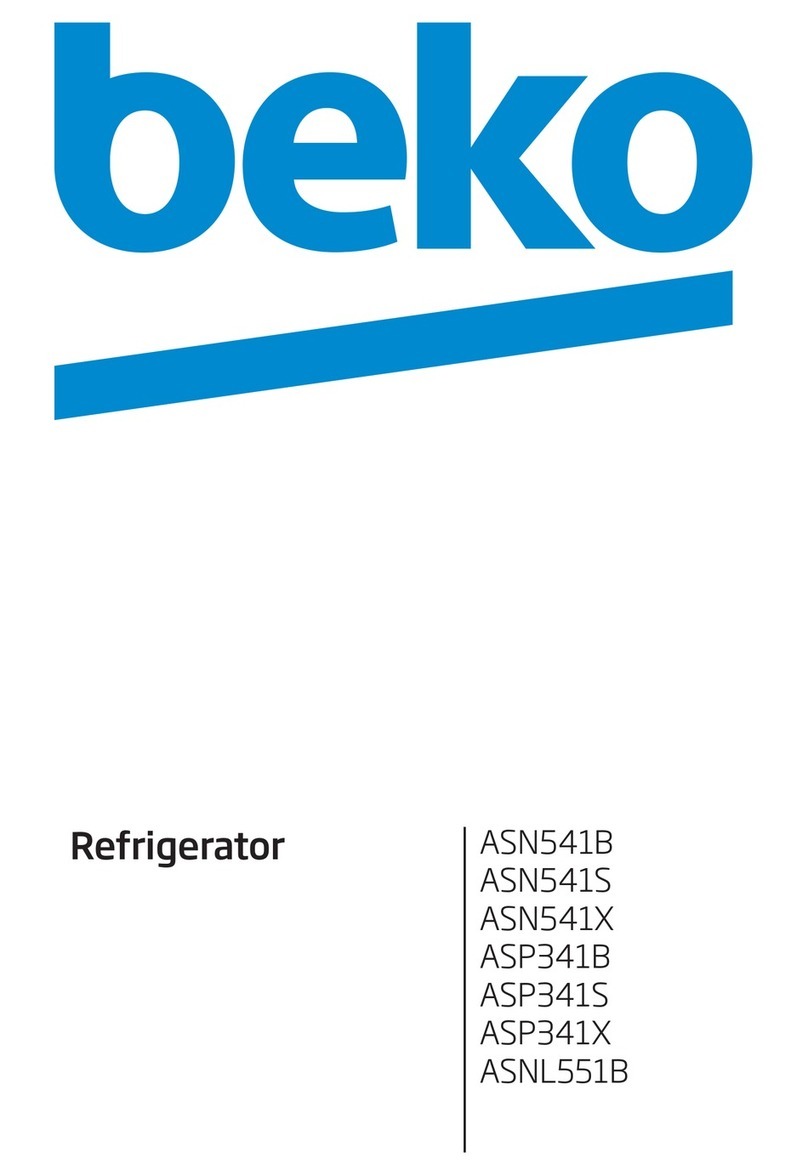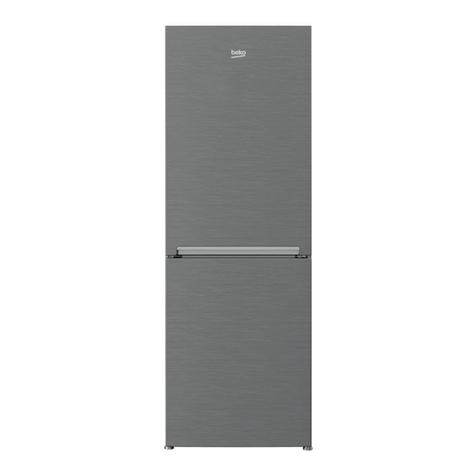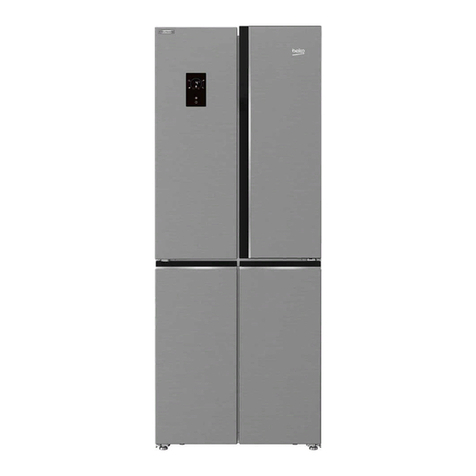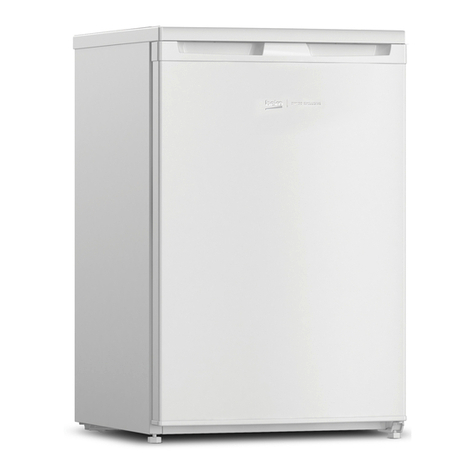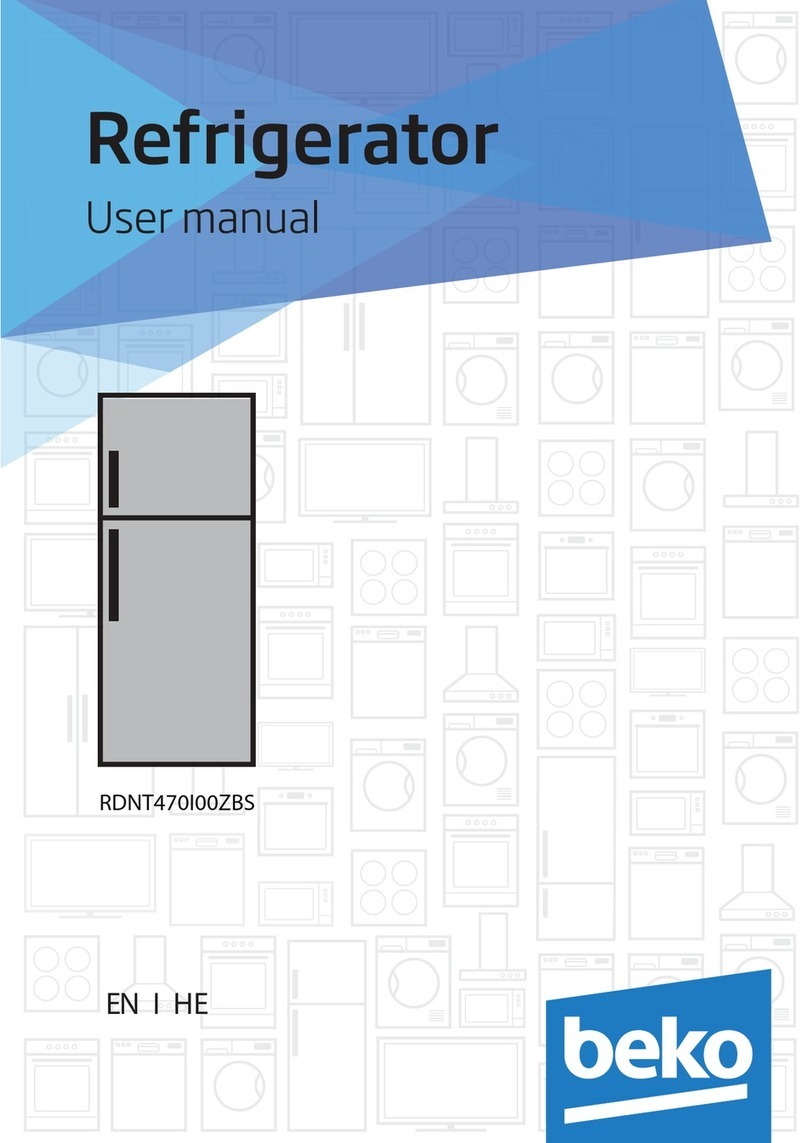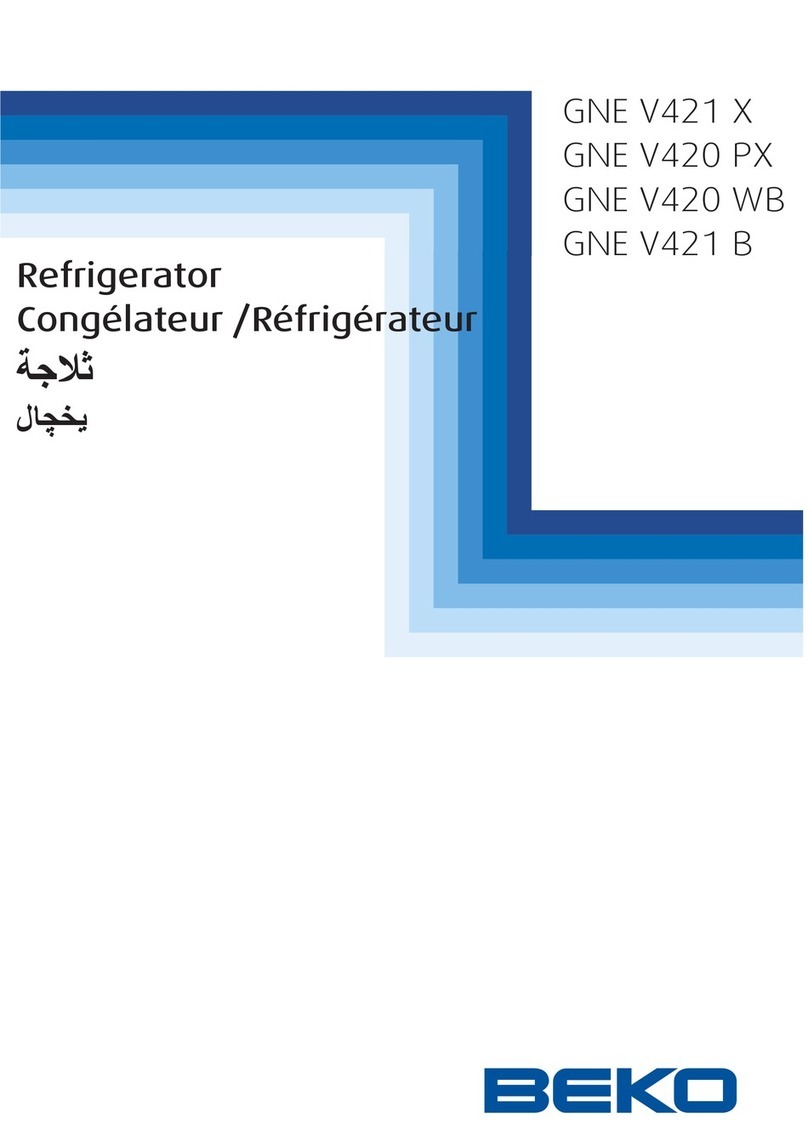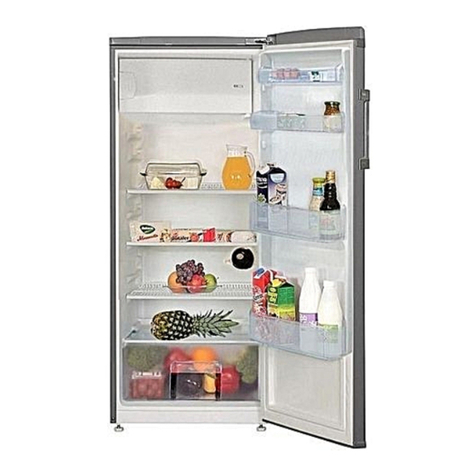
Safety and environment instructions
4 /23EN Refrigerator / User Guide
since it would get into contact with the
electrical parts in the refrigerator!
methods to accelerate the defrosting proc-
ess, other than those recommended by the
manufacturer.
as the door and drawer as a means of sup-
port or step. This will cause the product to tip
over or parts of it get damaged.
the refrigerant is circulating, with drilling or
cutting tools. The refrigerant that might blow
out when the gas channels of the evapora-
tor, pipe extensions or surface coatings are
punctured may cause skin irritations and eye
injuries.
the refrigerator with any material.
closed and vertically.
since there is the risk of fire or explosion!
flammable gases (e.g. spray) as well as the
explosive materials should never be kept in
the appliance.
top of the product. Spilling water on an elec-
trical component may cause electric shocks
or risk of fire.
-
tive medicines, scientific materials and etc.)
that require a precise temperature control in
the refrigerator.
period of time, unplug and unload the food in
it.
not look at the blue light with optical tools.
wind is dangerous with respect to electrical
safety.
-
stat), wait for minimum 5 minutes to plug in
the product again after unplugging it.
the door is opened, and cause injury or dam-
age. Similar problems may occur in case of
putting things on top of the product.
-
dle, do not pull by the handle when changing
the place of the product. Handle may get
loose.
part of your body get caught by the moving
parts inside the product.
1.1.1 HCA warning
R600a:
This gas is flammable. Therefore, pay attention
to not damaging the cooling system and piping
during usage and transportation. In the event of
damage, keep your product away from potenti-
al fire sources that can cause the product catch
a fire and ventilate the room in which the unit
is placed.
Ignore this warning if your product’s coo-
ling system contains R134a.
Type of gas used in the product is stated in the
type plate which is on the left wall inside the
refrigerator.
Never throw the product in fire for disposal.
CIf the product is equipped with a cooling
system containing R134a gas, ignore this
warning.
CYou can learn the gas used in production of
your product on the rating plate located on
the left inner part of it.
AWARNING: Never dispose the product
in fire.
1.1.2 For products with a
water dispenser
Pressure for cold water inlet shall be
maximum 90 psi (620 kPa). If your water
pressure exceeds 80 psi (550 kPa), use
a pressure limiting valve in your mains

